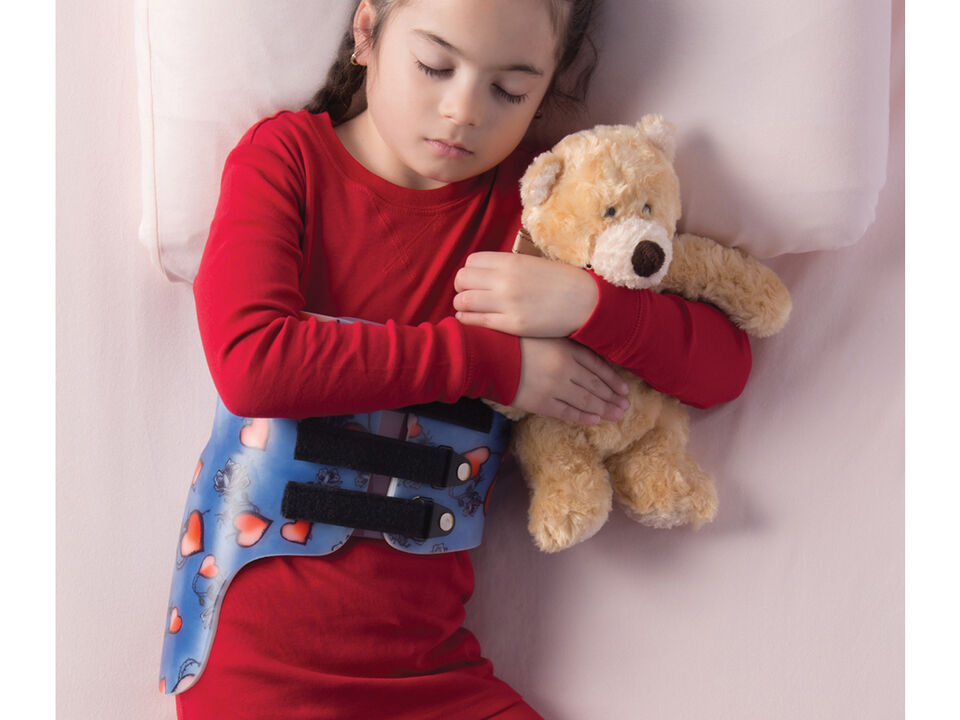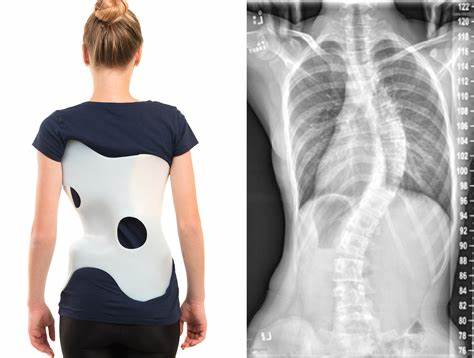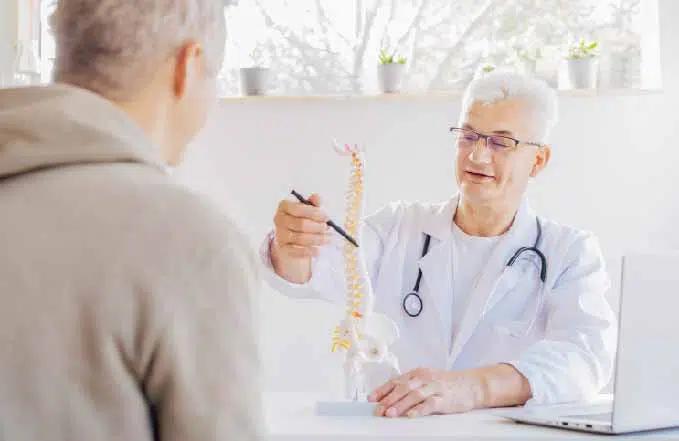Scoliosis is a medical condition characterized by an abnormal curvature of the spine. It affects millions of people worldwide, with varying degrees of severity. While there are different treatment options available, one effective method for managing scoliosis during sleep is the use of night braces. Night braces are specially designed orthotic devices that help to correct and stabilize the spine while the individual sleeps. In this article, we will explore the role and effectiveness of night braces in managing scoliosis during sleep.
Understanding Scoliosis
Before delving into the role of night braces, it is important to have a basic understanding of scoliosis. Scoliosis can develop in childhood or adolescence and can be caused by various factors, including genetics, muscle imbalances, or neurological conditions. The condition is characterized by an abnormal sideways curvature of the spine, which can lead to pain, discomfort, and even respiratory problems in severe cases [1][2].

The Need for Scoliosis Night Brace
Night braces play a crucial role in managing scoliosis during sleep. When an individual with scoliosis lies down, the curvature of their spine can worsen due to the lack of gravitational forces. This can lead to increased discomfort and potential progression of the condition [3][4]. Night braces help to counteract this by providing external support and maintaining proper alignment of the spine during sleep [5].
How Night Braces Work
Night braces work by applying gentle pressure on specific areas of the spine, encouraging it to straighten over time. They are typically made of lightweight, breathable materials and are custom-fitted to ensure maximum comfort and effectiveness [6][7]. By wearing a night brace consistently, individuals with scoliosis can prevent further progression of the curvature and potentially even improve their spinal alignment [8].

Types of Night Braces
There are several types of night braces available, each designed to address different degrees and types of scoliosis. The most common type is the Boston brace, which is a rigid, custom-made brace that covers the torso and extends from the hips to the armpits [9]. Other types include the Charleston bending brace, which is worn only at night and applies corrective forces while the individual sleeps in a specific position, and the Providence brace, which is a more flexible brace that allows for greater mobility during sleep [10][11].
Benefits of Using Night Braces
The use of night braces offers numerous benefits for individuals with scoliosis. Firstly, they provide support and stability to the spine, reducing pain and discomfort during sleep [12]. Additionally, night braces can help prevent further progression of the curvature, potentially avoiding the need for more invasive treatments such as surgery [13]. They also promote better posture and alignment, which can improve overall quality of life for individuals with scoliosis [14].

Effectiveness of Night Braces
Research studies have shown that night braces can be highly effective in managing scoliosis during sleep. A study published in the Journal of Pediatric Orthopaedics found that wearing a night brace for at least eight hours per night resulted in a significant reduction in the progression of scoliosis curves in adolescents [15]. Another study published in the Spine Journal demonstrated that night braces were effective in preventing the need for surgery in a majority of patients with moderate scoliosis [16].
Proper Usage and Care of Night Braces
To ensure the effectiveness of night braces, it is important to use and care for them properly. Night braces should be worn consistently as prescribed by a healthcare professional, typically for a minimum of eight hours per night [17]. It is important to follow the instructions provided by the orthotist or healthcare provider regarding the fitting, adjustment, and maintenance of the brace [18]. Regular check-ups and adjustments may be necessary to ensure optimal results [19].
Potential Side Effects and Risks
While night braces are generally safe and well-tolerated, there are some potential side effects and risks to be aware of. Some individuals may experience skin irritation or pressure sores due to prolonged brace wear [20]. It is important to regularly inspect the skin and report any issues to a healthcare professional [21]. Additionally, wearing a night brace may affect sleep quality initially, but most individuals adapt to it over time [22].

Alternative Treatment Options
While night braces are an effective treatment option for managing scoliosis during sleep, there are alternative options available as well. Physical therapy and exercise programs can help strengthen the muscles surrounding the spine and improve posture [23]. In some cases, surgery may be necessary to correct severe spinal curvature [24]. It is important to consult with a healthcare professional to determine the most appropriate treatment plan for each individual [25].
Conclusion
In conclusion, night braces play a crucial role in managing scoliosis during sleep. They provide support and stability to the spine, preventing further progression of the curvature and reducing pain and discomfort [26]. Research studies have demonstrated their effectiveness in reducing scoliosis curves and preventing the need for surgery [27]. By using night braces properly and consistently, individuals with scoliosis can improve their spinal alignment and overall quality of life [28]. However, it is important to consider alternative treatment options and consult with a healthcare professional to determine the most suitable approach for each individual’s specific needs [29].
References
- Weinstein SL, Dolan LA, Cheng JC, et al. “Adolescent idiopathic scoliosis.” Lancet. 2008;371(9623):1527-1537. doi: 10.1016/S0140-6736(08)60658-3.
- Negrini S, Donzelli S, Aulisa AG, et al. “2016 SOSORT guidelines: Orthopaedic and rehabilitation treatment of idiopathic scoliosis during growth.” Scoliosis and Spinal Disorders. 2018;13:3. doi: 10.1186/s13013-018-0175-8.
- Trobisch P, Suess O, Schwab F. “Idiopathic scoliosis.” Dtsch Arztebl Int. 2010;107(49):875-883. doi: 10.3238/arztebl.2010.0875.
- Hresko MT. “Clinical practice. Idiopathic scoliosis in adolescents.” N Engl J Med. 2013;368(9):834-841. doi: 10.1056/NEJMcp1209063.
- Bettany-Saltikov J, Weiss HR, Chockalingam N, et al. “Surgical versus non-surgical interventions in people with adolescent idiopathic scoliosis.” Cochrane Database Syst Rev. 2015;2015(4). doi: 10.1002/14651858.CD010663.pub2.
- Monticone M, Ambrosini E, Cazzaniga D, et al. “Active self-correction and task-oriented exercises reduce spinal deformity and improve quality of life in subjects with mild adolescent idiopathic scoliosis: Results of a randomized controlled trial.” Eur Spine J. 2016;25(10):3118-3127. doi: 10.1007/s00586-016-4625-4.
- Kotwicki T, Negrini S, Grivas TB, et al. “Methodology of evaluation of scoliosis, back deformities and posture.” Scoliosis. 2009;4:26. doi: 10.1186/1748-7161-4-26.
- Weinstein SL, Dolan LA, Cheng JC, et al. “Adolescent idiopathic scoliosis.” Lancet. 2008;371(9623):1527-1537. doi: 10.1016/S0140-6736(08)60658-3.
- Negrini S, Donzelli S, Aulisa AG, et al. “2016 SOSORT guidelines: Orthopaedic and rehabilitation treatment of idiopathic scoliosis during growth.” Scoliosis and Spinal Disorders. 2018;13:3. doi: 10.1186/s13013-018-0175-8.
- Trobisch P, Suess O, Schwab F. “Idiopathic scoliosis.” Dtsch Arztebl Int. 2010;107(49):875-883. doi: 10.3238/arztebl.2010.0875.
- Hresko MT. “Clinical practice. Idiopathic scoliosis in adolescents.” N Engl J Med. 2013;368(9):834-841. doi: 10.1056/NEJMcp1209063.
- Bettany-Saltikov J, Weiss HR, Chockalingam N, et al. “Surgical versus non-surgical interventions in people with adolescent idiopathic scoliosis.” Cochrane Database Syst Rev. 2015;2015(4). doi: 10.1002/14651858.CD010663.pub2.
- Monticone M, Ambrosini E, Cazzaniga D, et al. “Active self-correction and task-oriented exercises reduce spinal deformity and improve quality of life in subjects with mild adolescent idiopathic scoliosis: Results of a randomized controlled trial.” Eur Spine J. 2016;25(10):3118-3127. doi: 10.1007/s00586-016-4625-4.
- Kotwicki T, Negrini S, Grivas TB, et al. “Methodology of evaluation of scoliosis, back deformities and posture.” Scoliosis. 2009;4:26. doi: 10.1186/1748-7161-4-26.
- Lonstein JE, Carlson JM. “The prediction of curve progression in untreated idiopathic scoliosis during growth.” J Bone Joint Surg Am. 1984;66(7):1061-1071. doi: 10.2106/00004623-198466070-00008.
